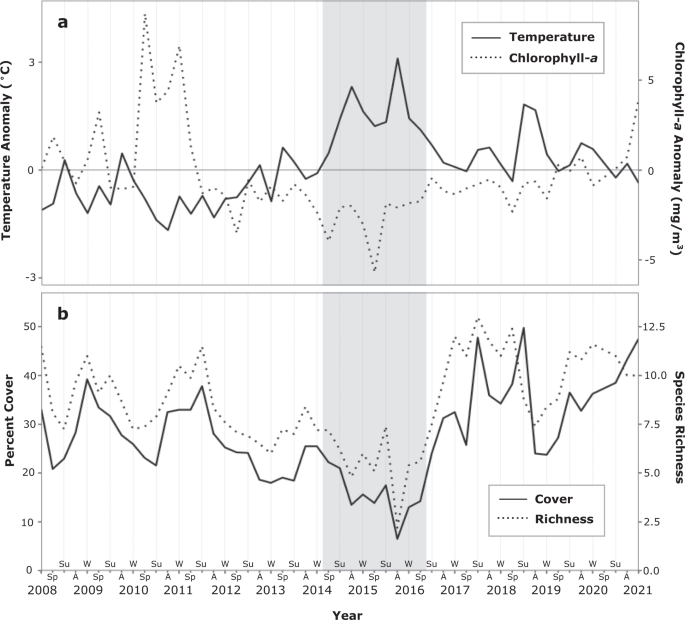サンタバーバラ海峡を「ブロブ」が通過してから6年、ケルプの森に残る影響を研究者が発見 Six years after ‘the Blob’ rolled through the Santa Barbara Channel, researchers find lasting effects in the kelp forest communities
2022-11-15 カリフォルニア大学サンタバーバラ校(UCSB)
この研究によると、最近侵入してきたWatersipora subatraと、古くから生息しているBugula neritina(が、ブロブ後の海峡でより多く見られるようになった。
「鱗状ミミズカタツムリ」と呼ばれる在来の無柄腹足類が、ブロブ発生以降に生息数を大幅に増やしたことを発見している。バハカリフォルニア以南に生息するこの動物は、温暖な気候に適応することで「ブロブ」に耐えることができたのではないかと、研究者は推測している。また、植物プランクトンが減少した時期には、ケルプのデトライタスなどの代替食に切り替えることができたため、優位に立てた可能性がある。
<関連情報>
- https://www.news.ucsb.edu/2022/020774/changing-sea-floor
- https://www.nature.com/articles/s42003-022-04107-z
海洋熱波「The Blob」がカリフォルニアのケルプの森の生態系を一変させる The Blob marine heatwave transforms California kelp forest ecosystems
Kristen M. Michaud,Daniel C. Reed & Robert J. Miller
Communications Biology Published:28 October 2022
DOI:https://doi.org/10.1038/s42003-022-04107-z

Abstract
Ocean warming has both direct physiological and indirect ecological consequences for marine organisms. Sessile animals may be particularly vulnerable to anomalous warming given constraints in food acquisition and reproduction imposed by sessility. In temperate reef ecosystems, sessile suspension feeding invertebrates provide food for an array of mobile species and act as a critical trophic link between the plankton and the benthos. Using 14 years of seasonal benthic community data across five coastal reefs, we evaluated how communities of sessile invertebrates in southern California kelp forests responded to the “Blob”, a period of anomalously high temperatures and low phytoplankton production. We show that this event had prolonged consequences for kelp forest ecosystems. Changes to community structure, including species invasions, have persisted six years post-Blob, suggesting that a climate-driven shift in California kelp forests is underway.


